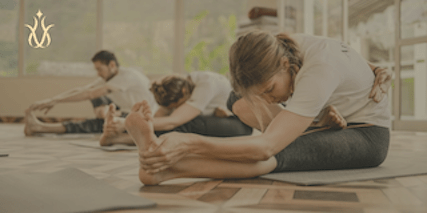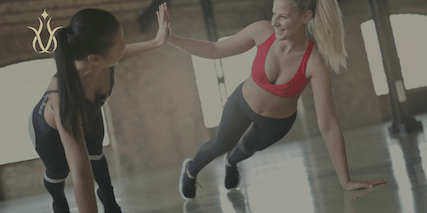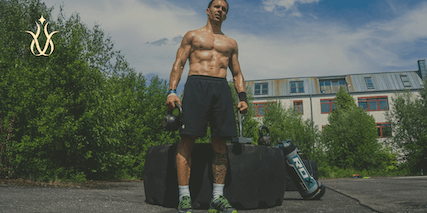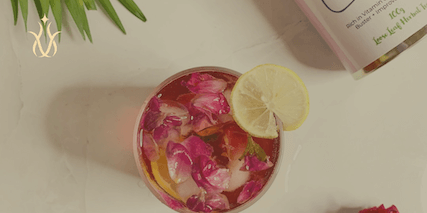Pilates isn’t just a workout; it’s a path to a balanced and strong body with enhanced flexibility. Our guide dives deep into how Pilates practices can help you achieve remarkable improvements in physical fitness. Learn about the core principles of Pilates and how they contribute to better posture, increased muscle strength, and greater flexibility. This article provides a detailed overview of specific Pilates exercises tailored to enhance your balance and core stability, alongside expert tips on incorporating these exercises into your routine for optimal results.
Whether you’re a beginner or an experienced practitioner, find out how Pilates can help you reach your fitness goals and unlock your body’s full potential.
Introduction to the Benefits of Pilates
Pilates, as we know it today, is more than just a form of exercise. It’s a discipline, a way of life, designed to harmonise mind and body. The emergence of the Pilates method dates back to the early 20th century. It was the brainchild of a physical trainer from Germany, Joseph Pilates. His objective was simple yet profound: to enhance physical strength, flexibility, coordination, and body awareness.
Joseph’s principles of the Pilates method revolves around core ideas such as concentration, control, precision, and breath. He believed that by applying these principles to exercises, you could not only improve physical health but also mental health.
Understanding the Basic Pilates Principles
Delving deeper into the foundational tenets of Pilates, one finds two pivotal aspects – the importance of proper breathing and the mind-body connection.
Importance of Proper Breathing in Pilates
Breathing is a natural phenomenon we tend to take for granted. However, in the realm of Pilates, breath control bears significant importance. It’s not just about inhaling and exhaling; it’s about synchronising breath with movement. This harmonious intertwining of respiration and action is a key aspect of Pilates that amplifies exercise efficiency.
In Pilates, the breath control mechanism is typically called ‘lateral breathing.’ This method encourages breath to flow deeply into the back and sides of your rib cage. As a result, you’re prompted to engage your core muscles as you exhale, enhancing the workout’s effectiveness.
Mind-Body Connection in Pilates
The mind-body connection in Pilates transcends the notion of physical training; it ventures into the realm of mental well-being. Joseph Pilates was a staunch advocate of this principle. He said, “Pilates is complete coordination of body, mind, and spirit.”
Studies have validated the benefits of this body awareness and mind-body connection in Pilates. According to research published in the Journal of Bodywork and Movement Therapies, Pilates practice can be a helpful tool to enhance mental focus, reduce stress, and improve overall mental health. Thus, the unique blend of physical harmony and mental focus makes Pilates not just an exercise regime but a holistic wellness approach aiding both physical and mental health.
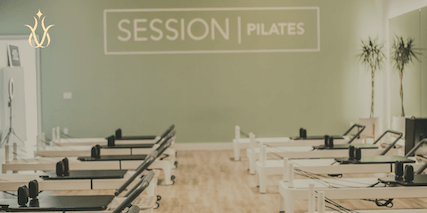
Equipment Used in Pilates
When you embark on a Pilates journey, you must familiarise yourself with the equipment. From Pilates mats to the more complex Pilates reformers, each tool has a specific role in enhancing your pilates workout efficiency and targeted benefits.
Pilates Mat Exercises
Mat exercises are the crux of Pilates training. They primarily focus on improving core strength, balance, and flexibility while engaging your core. The beauty of mat work is that it utilises your body weight as the primary source of resistance, providing an effective and versatile workout.
Specific mat exercises include the ‘Pilates Hundred,’ aimed at enhancing core muscle strength and stability, the ‘Roll Up,’ which fosters spinal flexibility; and the ‘Leg Circle,’ designed to improve hip joint flexibility and core muscles control. Furthermore, exercises like the ‘Swan Dive’ help develop back extensor strength, supporting good posture and reducing back pain.
Reformer Pilates
The Pilates reformer, a machine developed by Joseph Pilates himself, takes your Pilates training to a new level. The Pilates reformer looks like a bed frame, equipped with a flat platform that slides on wheels, attached to springs of varying resistance. This tool introduces a new range of exercises to improve strength, balance, and flexibility.
The reformer Pilates workout routine provides an intense full-body workout, making it a fantastic tool for overall body conditioning. A study published in the Journal of Sports Science & Medicine found that women who underwent reformer Pilates training for eight weeks significantly improved balance, functional mobility, and lower body strength.
One of the best benefits of using the reformer is that it provides adjustable resistance, allowing you to customise your workout intensity and difficulty based on your level of comfort and fitness goals.
Benefits of Pilates on Balance
Balance is a vital component of our daily lives, and practising Pilates provides an effective solution to improve it. Pilates practice challenges your core stability and coordination, ultimately enhancing your balance. Focusing on proper alignment and controlled movements, Pilates trains your body to be more aware and responsive, improving balance.
Scientific research backs these claims. For example, a study published in the Journal of Sports Medicine and Physical Fitness demonstrated that participants following a Pilates regimen significantly improved dynamic balance.
Benefits of Pilates on Strength
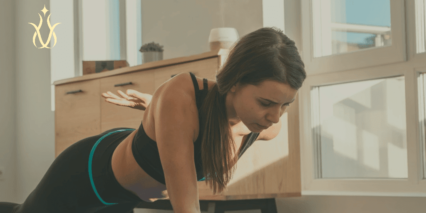
Pilates isn’t just about stretching and bending – it also significantly enhances muscular strength. Pilates exercises target muscle groups, often ignored in typical strength training regimes.
The resistance-based nature of Pilates, especially when performed on equipment like the reformer, helps build muscle strength and muscular endurance. Furthermore, the focus on engaging the core enhances abdominal and lower back strength, leading to improved overall body strength.
These assertions are evidence-based, with research supporting the impact of Pilates on muscle strength. For example, a study by the Journal of Strength and Conditioning Research found that Pilates significantly improved lower body strength in adult females after an eight-week training period.
Benefits of Pilates on Flexibility
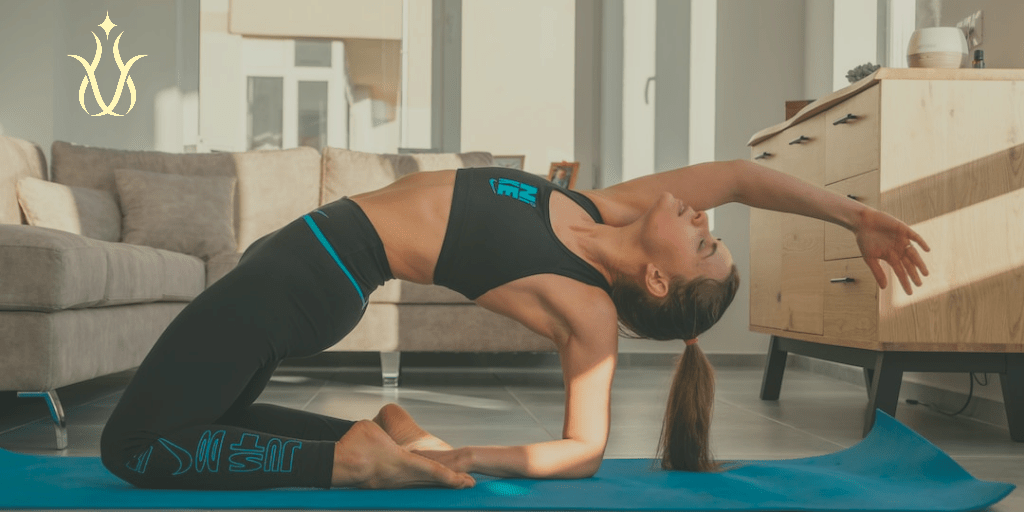
Flexibility is another crucial aspect of fitness, and Pilates shines here too. Pilates focuses on lengthening and expanding the muscles rather than bulking. This approach results in increased flexibility and joint mobility.
Research published in the Journal of Sports Medicine and Physical Fitness demonstrated that individuals following a Pilates regimen showed marked improvements in flexibility, thanks to the incorporation of stretching exercises into each session.
In conclusion, Pilates offers a holistic fitness solution by improving balance, enhancing core muscle strength, and increasing flexibility. The scientific evidence validating these benefits underscores why Pilates is worth including in your fitness routine.
Pilates Exercises
Whether you’re a beginner or a seasoned fitness enthusiast, Pilates offers a range of exercises to cater to varying fitness levels. Here’s a comprehensive guide to help you get started or advance your Pilates routine:
Beginner Pilates Exercises
The Pilates Hundred: This classic core-strength exercise promotes abdominal strength and stamina. Begin by lying flat on your mat, lifting your legs to a table-top position, and pulsing your arms up and down while breathing in and out rhythmically.
Single Leg Stretch: This beginner-friendly move targets the abdominal muscles. Start by drawing one knee into your chest while extending the other leg, then switch legs while keeping your core engaged.
Intermediate Pilates Exercises
Open Leg Balance: This move challenges your balance and core strength. Sit on your mat, lean back slightly, and extend your legs upward, grabbing your ankles. Hold for a few breaths, then release.
Side Kick Series: This series helps to tone your legs and improve hip mobility. Lie on your side with extended legs and perform kicks forward and backwards, keeping your body stable.
Advanced Pilates Exercises
The Teaser: This exercise is a total body move that strengthens your core muscles and improves balance. Begin by lying on your back, then lift your upper and lower body simultaneously to create a “V” shape, balancing on your sit bones.
The Jackknife: This advanced move enhances your core strength and flexibility. Start flat on your back, lift your legs and hips towards the ceiling, then extend your legs over your head. Next, lift your hips and control your legs as you lower them.
Incorporating Pilates into the Daily Routine
Incorporating Pilates into your daily routine can be simple yet incredibly rewarding. Here are some practical ways to integrate Pilates into your lifestyle:
Start Your Day With Pilates: Begin your day with a few Pilates exercises. It can help wake up your body and mind and set a positive tone for the day.
Use a Pilates App: There are numerous Pilates apps offering guided exercises for all fitness levels. You can use these during your lunch break, before bedtime, or when you have a few spare minutes.
Join a Pilates Class: Participating in a local or online class provides proper guidance and helps you stay committed.
The impact of a consistent Pilates routine on overall health and wellness is significant. Regular Pilates practice can improve balance, flexibility, and strength. Moreover, it can enhance mental focus, stress management, and overall quality of life. The Journal of Physical Therapy Science found that a consistent Pilates routine improves posture, reduces lower back pain, and enhances physical fitness.
Pilates for Injury Rehabilitation
The realm of Pilates extends beyond mere fitness – it also plays a significant role in injury rehabilitation and prevention. Pilates exercises improve body alignment, enhance strength, and increase flexibility. These factors combined contribute to a healthier musculoskeletal system, reducing the risk of injuries.
Moreover, the adaptable nature of Pilates exercises makes them suitable for people in different stages of injury recovery. They can be modified to cater to the individual’s comfort level and progress, facilitating gradual and safe rehabilitation.
The research underlines the effectiveness of Pilates in rehabilitation contexts. For example, a systematic review in the Journal of Orthopaedic & Sports Physical Therapy indicated that Pilates-based therapeutic exercise was beneficial for individuals with chronic low back pain, highlighting its positive impact on pain reduction and functional improvement.
Precautions & Contraindications in Pilates
Like any physical activity, safety must be a top priority when practising Pilates. Here are a few precautions to consider:
Ensure Correct Form: Poor form can lead to injuries. If you’re a beginner, consider working with a certified Pilates instructor to ensure the correct technique.
Listen to Your Body: Pushing your body beyond its comfort zone can be harmful. Instead, be aware of your limits and progress at your own pace.
Stay Hydrated: Keeping your body hydrated is essential, especially during vigorous Pilates workouts.
Despite its many benefits, Pilates might not be recommended for individuals with certain conditions, such as severe osteoporosis, very high or low blood pressure, or those at risk of a stroke. Pregnant women should also seek medical advice before embarking on Pilates practice.
Conclusion – Overall Impact of Pilates on Health and Lifestyle
Wrapping up, the impact of Pilates on our health and lifestyle is truly multifaceted. Its unique blend of strength training, flexibility enhancement, and balance improvement equips us with better physical capabilities and overall well-being. From building a stronger core muscles to offering injury rehabilitation, Pilates stands as a testament to the idea that fitness is not merely about appearance but also about functional strength and resilience.
If you’re a senior citizen, don’t shy away from exploring the world of Pilates. Despite age, Pilates can offer an avenue to improve your balance, strength, and flexibility. It’s never too late to start, and the benefits you’ll reap will be worth the effort. Remember, fitness is not a destination; it’s a journey of continuous improvement.
Frequently Asked Questions about Pilates
What is Pilates?
- Pilates is a form of mind-body exercise that emphasizes the balanced development of the body through core strength, flexibility, and awareness in order to support efficient, graceful movement.
- It specifically focuses on strengthening the body’s “powerhouse,” which includes the muscles in the abdomen, lower back, hips, and buttocks.
- Pilates was created in the early 20th century by a German fitness specialist named Joseph Pilates, who was inspired by forms like yoga, gymnastics, and martial arts.
- It places a strong emphasis on proper breathing techniques to promote relaxation, reduce stress, and help practitioners to better control their bodies and movements.
- The method emphasizes the connection between the mind and the body, and encourages practitioners to be fully aware of how their body moves and functions.
- Pilates can be performed with just a mat, using your own body weight for resistance, or with special equipment like the Reformer, a machine that uses springs and pulleys to provide varying levels of resistance.
What is Pilates good for?
Regular practice of Pilates can lead to improved posture, as the exercises promote balanced muscle development, , improving overall strength, flexibility, and body awareness.
Does Pilates really change your body?
Yes, regular Pilates practice can indeed bring about noticeable changes to your body, both in terms of physical appearance and internal health. Here’s how:
- Strength and Muscle Tone: Pilates exercises target various muscle groups, with a particular emphasis on the core. Over time, you’ll likely notice an increase in overall muscle tone and strength, especially in your abdomen, back, and hips.
- Posture: Pilates focuses heavily on alignment and proper form, which can greatly improve your posture. Over time, this can lead to noticeable changes in the way you carry yourself, making you look taller and more confident.
- Flexibility: Pilates includes a lot of stretching, which can improve your flexibility over time. This not only enhances the way you move but can also help prevent injuries and alleviate certain types of body aches and pains.
- Body Composition: While Pilates is not a high-intensity workout, it does contribute to overall calorie burn and muscle building. Combined with a balanced diet and regular cardiovascular exercise, this can lead to changes in body composition — potentially reducing body fat percentage and increasing lean muscle mass.
- Mind-Body Connection: Pilates emphasizes mindful movement, which can enhance your body awareness and mind-body connection. This can lead to improved body control and coordination and may even contribute to healthier eating and lifestyle habits.
- Reduced Stress: Like many forms of exercise, Pilates can help reduce stress and improve mental well-being. This may not result in visible physical changes, but the impact on overall health and quality of life is significant.
Remember that while you may start noticing some changes within a few weeks of regular practice, significant transformations require time, consistency, and a balanced approach to overall health and wellness.
Is Pilates safe for beginners?
Yes, Pilates is safe for beginners. The exercises can be modified to suit your fitness level. However, if you’re new to Pilates, it’s recommended to start under the guidance of a certified instructor to ensure correct form and prevent injury.
How often should I do Pilates?
Doing Pilates 2-3 times per week is recommended for optimal benefits. This frequency allows your body enough rest in between the sessions while also providing consistency for progress.
Can I do Pilates if I have a health condition?
Pilates can be adapted for various health conditions. However, it’s essential to consult your doctor or a health professional before starting a new exercise regime, especially if you have a pre-existing health condition.
Can Pilates help me lose weight?
While Pilates primarily focuses on strength and flexibility, it can contribute to weight loss as part of a balanced diet and exercise regime. Regular Pilates practice can also help tone your muscles and improve your posture, enhancing your overall physique.
It’s worth noting that while Pilates can contribute to weight loss and offer numerous health benefits, it is not typically as effective for weight loss as more cardio-intensive exercises such as running, cycling, or high-intensity interval training (HIIT).
Does Pilates help you lose belly fat?
While it can contribute to fat loss, it’s important to understand how it fits into the bigger picture:
- No Spot Reduction: It’s a common misconception that you can target fat loss in specific areas of the body, like the belly. This concept, known as “spot reduction,” is largely debunked. Fat loss typically occurs evenly throughout the body, depending on your genetics.
- Calorie Burning: Pilates isn’t typically a high-calorie-burning exercise compared to more intensive activities like running or high-intensity interval training. However, it does contribute to your overall calorie burn for the day, which can help create the calorie deficit necessary for weight loss.
- Muscle Toning: Where Pilates really shines is in its ability to build and tone muscles, particularly in the core region. This can lead to a more defined appearance as you lose fat.
- Increased Metabolic Rate: By increasing your muscle mass through exercises like Pilates, you can slightly increase your resting metabolic rate (the number of calories your body burns at rest). This can contribute to overall fat loss over time.
- Mindful Movement: Pilates promotes mindful movement and helps improve body awareness. This mindful aspect can potentially translate into better body image and healthier eating habits, which are crucial for weight management.
- Holistic Approach: Remember, effective fat loss, whether in the belly or elsewhere, requires a holistic approach. This includes regular physical activity (both strength training and cardio), a balanced, calorie-controlled diet, sufficient sleep, and stress management.
What are the best Pilates apps and Online resouces?
There are many great online resources and apps for Pilates. Whether you’re a beginner or an experienced practitioner, here are some you might consider:
- Pilates Anytime: This is one of the most extensive online libraries for Pilates videos. It offers over 3,000 Pilates classes for all levels and interests.
- Blogilates: Created by Cassey Ho, an award-winning fitness instructor, Blogilates is both a YouTube channel and an app. It offers a variety of fun and challenging Pilates-inspired workouts. The app also includes a workout calendar and healthy recipes.
- Pilatesology: This platform offers classic Pilates classes. You can select from beginner to advanced classes, mat classes, and Pilates apparatus classes.
- The Balanced Life with Robin Long: This site provides online Pilates workouts and wellness resources. The Balanced Life’s approach focuses on self-care and balanced, realistic routines.
- Pilates by Lisa: This online Pilates studio offers a variety of workouts that can be sorted by duration, body part focus, or level of difficulty. There’s a 10-day free trial for new members.
- Glo: Glo provides a variety of yoga, Pilates, and meditation classes. You can filter classes by duration, level, and specific use.
- Peak Pilates: Peak Pilates offers a comprehensive selection of Pilates education courses, including on-demand and live virtual sessions.
- Pilates Interactive by BASI: This is a unique learning tool for Pilates practitioners. It contains an extensive exercise library with detailed performance notes.
- The Pilates Studio: This app has a variety of Pilates classes that focus on different areas of the body or on overall wellness.
- Pilates Workout and Exercises: Available on Android, this app offers a wide variety of routines for different skill levels.
What are the top Pilates retreats in Europe?
- Absolute Pilates Retreat – Ibiza, Spain
- The Pilates Studio – Kefalonia, Greece
- Euphoria Retreat – Mystras, Greece
- The Pilates Studio – London, United Kingdom
- The Pilates Loft – Lisbon, Portugal
- PURE Pilates Studio – Barcelona, Spain
- The Pilates Studio – Paris, France
- Pilates Wellness Retreat – Tuscany, Italy
- The Pilates Retreat – Mallorca, Spain
What are the top Pilates retreats in Asia?
- Absolute Pilates Retreat – Bali, Indonesia
- Kamalaya Wellness Sanctuary – Koh Samui, Thailand
- The Pilates Studio – Hong Kong
- Kudat Riviera Pilates Retreat – Borneo, Malaysia
- The Pilates Space – Singapore
- Museflower Retreat & Spa – Chiang Rai, Thailand
- The Pilates Room – Jakarta, Indonesia
- Atmantan Wellness Resort – Pune, India
- Yoga & Pilates in Paradise – Phuket, Thailand
- The Pilates Studio – Seoul, South Korea
What are the top Pilates retreats in North America?
- Rancho La Puerta – Tecate, Mexico
- BodyHoliday – St. Lucia, Caribbean …. technically part of North America but a great retreat 🙂
- Pilates Maui – Maui, Hawaii, USA
- The Ranch Malibu – Malibu, California, USA
- Amansala Eco-Chic Resort – Tulum, Mexico
- Mountain Trek Fitness Retreat – British Columbia, Canada
- Golden Door – San Marcos, California, USA
- Red Mountain Resort – St. George, Utah, USA
- Carillon Miami Wellness Resort – Miami Beach, Florida, USA
- Mii Amo – Sedona, Arizona, USA
Remember, Pilates is more than an exercise regime; it’s a lifestyle choice for better health and vitality. Embrace the journey, and your body will thank you for it.
Resources:
Pereira MJ et al (2022). Benefits of Pilates in the Elderly Population: A Systematic Review and Meta-Analysis. Available from: https://pubmed.ncbi.nlm.nih.gov/35323204/
Fernández-Rodríguez R et al (2022). Best Exercise Options for Reducing Pain and Disability in Adults With Chronic Low Back Pain: Pilates, Strength, Core-Based, and Mind-Body. A Network Meta-analysis. Available from: https://pubmed.ncbi.nlm.nih.gov/35722759/
Engers PB et al (2016). The effects of the Pilates method in the elderly: a systematic review. Available from: https://pubmed.ncbi.nlm.nih.gov/27476629/
Verywell Fit. (2020). The Health Benefits of Pilates. Available from: https://www.verywellfit.com
Disclaimer: This article is for informational purposes only and should not replace professional medical advice. If you have specific concerns or medical conditions, it is recommended to consult with a healthcare professional for personalised guidance and support.
Related Articles:
Pilates vs Yoga: Which Is Right for You?
The Benefits of Yoga
The Benefits of Tai Chi: A Comprehensive Guide
Top 10 Health Spas for Ultimate Wellness
https://theaoj.co.uk/the-best-yoga-retreats-in-bali/
